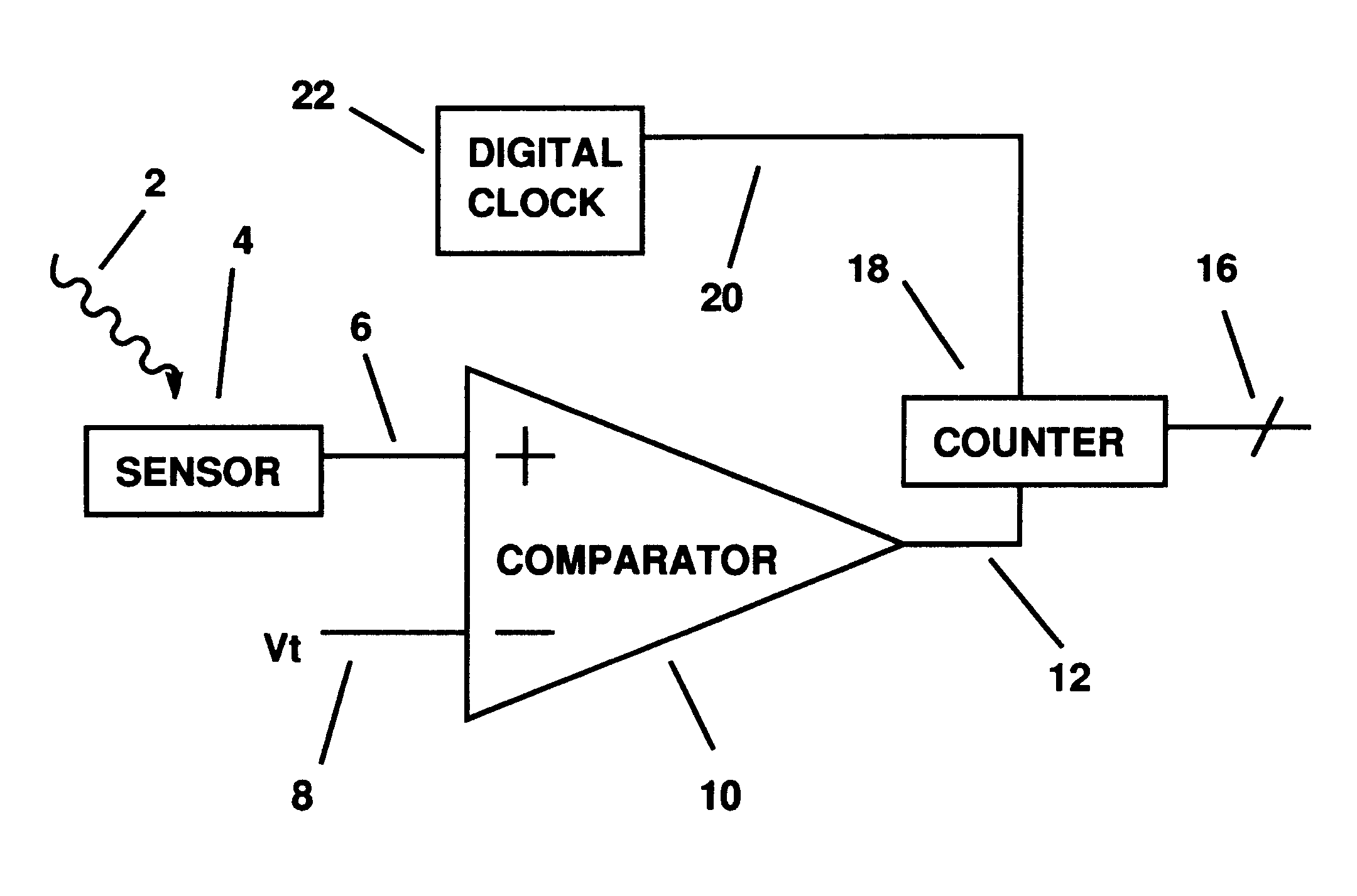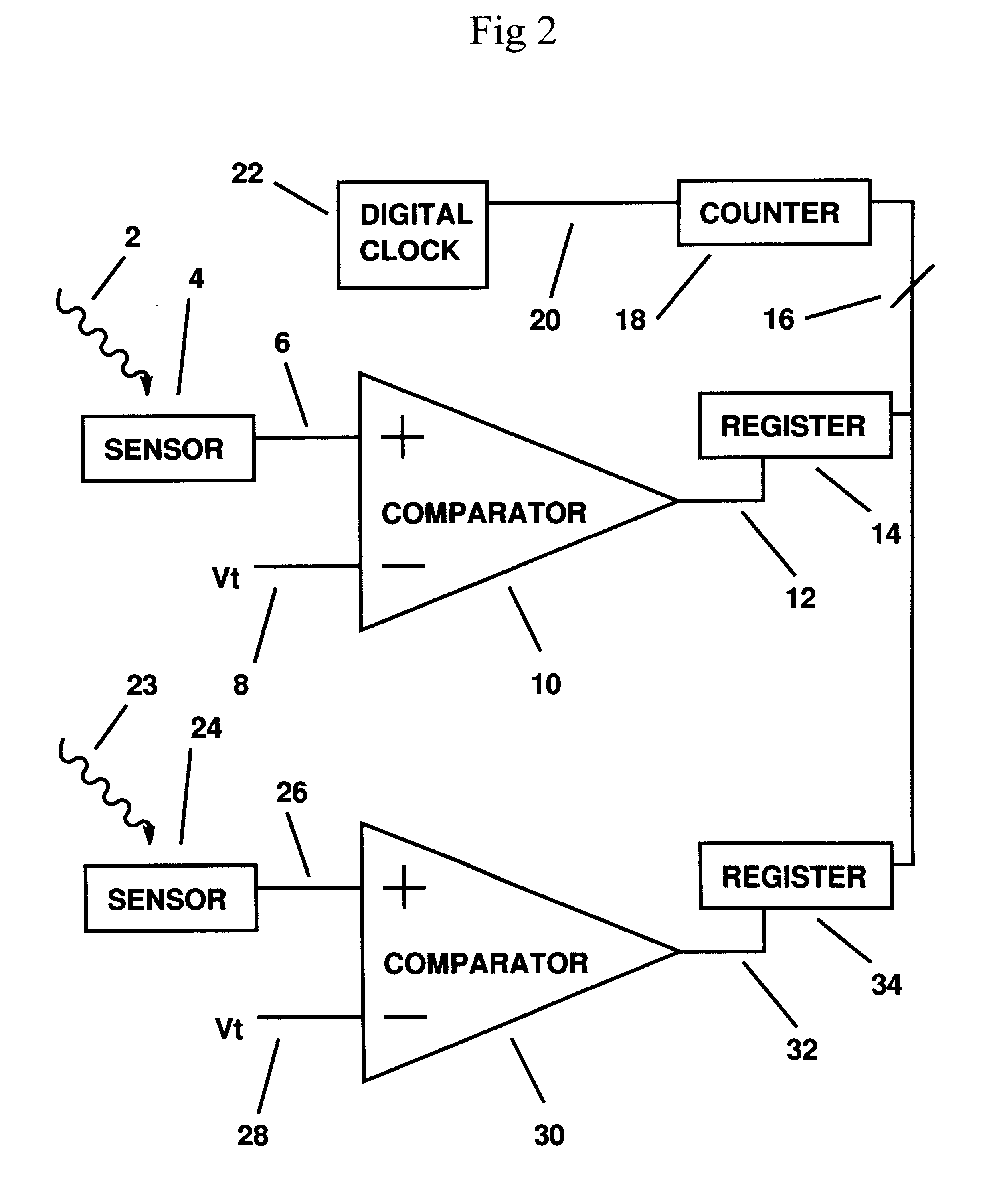Parallel and shared parallel analog-to-digital conversion for digital imaging
a digital imaging and parallel technology, applied in analogue/digital conversion, transmission systems, instruments, etc., can solve the problems of requiring more time for successful approximation, affecting the conversion speed of digital imaging, and requiring a lot of time for both types of converters to achieve the effect of increasing the conversion rate, and reducing the conversion rate of digital imaging
- Summary
- Abstract
- Description
- Claims
- Application Information
AI Technical Summary
Problems solved by technology
Method used
Image
Examples
Embodiment Construction
The preferred embodiment of the present invention as described in claim 1 is a machine used for digital image acquisition, comprising a first counter which provides a first count and a first sensor which provides a first sensor output signal. The preferred embodiment includes means for causing the first count to change as a function of time and means for generating a first sensor output signal level change. The preferred embodiment also includes means for detecting when the first sensor output signal level change reaches a first threshold level, and means for measuring a first elapsed count of the first count which is indicative of the time required for the first sensor output signal level change to reach the first threshold level.
In other words, the preferred embodiment of the invention measures the time required for the first sensor output signal level to change by an amount equal to the first threshold level. The first counter keeps track of time via the first count, which might ...
PUM
 Login to View More
Login to View More Abstract
Description
Claims
Application Information
 Login to View More
Login to View More - R&D
- Intellectual Property
- Life Sciences
- Materials
- Tech Scout
- Unparalleled Data Quality
- Higher Quality Content
- 60% Fewer Hallucinations
Browse by: Latest US Patents, China's latest patents, Technical Efficacy Thesaurus, Application Domain, Technology Topic, Popular Technical Reports.
© 2025 PatSnap. All rights reserved.Legal|Privacy policy|Modern Slavery Act Transparency Statement|Sitemap|About US| Contact US: help@patsnap.com



